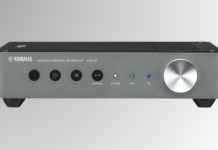Excerpt: Linux is an open-source, widely used operating system in embedded systems. Developers use Linux in several devices such as cellphones, TVs, smart home devices, etc., and working with Linux requires kernel developers to fix the bugs and problems.
Introduction
Linux is an old operating system, the developers are already familiar with it, and there will be less time required to fix the errors in the embedded system. Security matters most in embedded devices to protect them from several threats, and the Linux developers need to ensure the security of the devices. But still, certain major issues are found in top Linux programs for embedded devices. In this article, we will be discussing all the Linux and security issues in embedded systems.
What is LINUX?
Linux is considered the predecessor of Unix and is an open-source operating system kernel. It is compatible with C++, Perl/ java, and other programming languages. The Linus kernel can be shared and distributed freely. Now here, the common question arises: what does kernel mean? So, the kernel is a core operating system that has the control and ability to manage the communication between the software and hardware components. And being a kernel, Linux is responsible for handling and managing the lowest level of abstraction or certain most complex specific data.
Now Linux has evolved to a great extent; early Linux programming used tools like the GNU compiler and debugger. These tools were used to develop data storage applications and build graphical user interfaces, etc. However, advanced Linux-based applications enable the users so many unique features like multithreading, multiprocessing, and hardware device interaction.
Interested in a Linux Certification course? Register now for Linux online training offered by ‘Mindmajix – A Global platform’.
Application of Linux operating system:
Linux was popularly used in servers, the architecture of the computer, computer security purposes, etc. It is widely used in real-time programs and embedded systems. Mozilla Firefox is based on Linux. The developers of Linux use this operating system in such a way that it constantly evolves with time by improving and adding features.
Limitations of Linux operating system:
Still, Linux is a growing operating system that lets the users and developers add more features and quality to better the operating system and avoid vulnerabilities. However, this rapidly changing software market demands more new technology to upgrade. Here are several limitations of the Linux operating system, which often stop the users to prefer it over another one.
- Hard to learn: It is comparatively harder to learn than the windows operating system. The users with less technical knowledge will face problems while learning it and give more time and effort. Windows users face complexity when switching to Linux. It is much like a command prompt in windows, and the learners need to know how to handle the terminals.
- Troubleshooting is difficult: Most of the Linux software is open source, and that too without warrantee of its working. Different errors are generated due to hardware and software. Troubleshooting in Linux is complex, and it is hard to solve if the person is not a technical expert. Being an open-source platform, it is developed and modified by the different communities, which mostly raises problems for others.
- Bad gaming support: Linux does not consider games. Windows enables popular and high-quality games to run perfectly. However, several technologies make gaming possible on Linux, such as Steam Proton, Wine, and Lutris. However, people find it hard to play games on Linux due to extra advanced technology like cloud technology because Linux does not provide smooth flow, flexibility, and exceptional graphic environment, which plays a significant role in any good game.
- Unsupported hardware: Hardware support is the most significant compatible feature for the operating systems. However, Linux does not properly meet this requirement of the hardware. The Linux kernel itself contains all drivers, but it can’t have the required driver for all the hardware. There is no defined fundamental for drivers in Linux as other operative systems have. Most of the pre-installed WiFi cards in laptops and printers might not be compatible with Linux.
What are the common mistakes Linux users make?
Most of the mistakes are made by the Linux users due to their switching from android to Linux operating system. Every operating system has different approaches to perform anything. Here are certain common mistakes which should be avoided:
- Choosing the wrong Linux distribution: Linux has hundreds of distributions available for the users to work with. Each one is specialized for different users and tasks. Selecting the wrong version can lead to the non-comfortability of using it for a long time. And especially when you are switching from one operating system to Linux, then firstly go with different articles and suggestions that will help you to know which one will be suitable for you.
- Considering software updates will be done for you: Linux provides too many update services, but they have to be run manually by default. Even many Linux version informs the users that the update is available, the users need to choose to install the updates. The installation of the updates is totally up to the users whether they want all the updates to be installed or just some of them.
- Ignoring the passwords because it’s Linux: Although logging in is not convenient, most of the time, the users skip the password. Also, the Linux practices are not so easy. Especially those distributions of Linux based on Ubuntu because they use Sudo to restrict the running as root. However, if you have successfully built a command on it, make sure not to ignore the passwords and Linux’s security advantages.
What exactly does the embedded system mean?
Simply, an embedded system comprises computer hardware and software and is intended to perform a specific function. The embedded system is well programmed and has algorithms to work on so that it can produce the expected result. Embedded devices are being used in wide varieties in almost all domains, including consumer electronics, medical sector, automobiles, the digital industry, household equipment, etc. The embedded system is much like a computing system ranging from no user interface (UI) to having the graphical user interface (GUI). No user-interface embedded system includes the devices which are developed to person only for a single task, and the embedded system having the GUI includes button, LEDs, and touchscreen sensing features.
Characteristics of an embedded system:
- It can be embedded in a large system to perform specific operations.
- It consists of hardware, software, re, and firmware.
- Used for sensing and real-time computing in internet of things (IoT)
- To enable the large system to work properly, embedded systems are required to operate under time constraints.
Major security issues found in top Linux programs for embedded devices:
The main aspect of security is confidentiality, integrity, and authenticity. As everyone knows that Linux users are less subjected to viruses. However, there are also certain security issues being faced in embedded devices.
- Irregular security updates: Since the Linux operating system don.t have the automated capability to allow the updates in the embedded devices to ensure security in it. If the embedded system needs to work securely for a long period, then the Linux developers most regularly upgrade for the security factor. To the embedded devices updates for security after a certain period, the Linux programmers must design it into the device to allow the security updates in the devices and remotely update the software.
- Replication of attacks: Since the embedded devices have several excellent techniques and algorithms and some of the embedded devices have the same version and designs, the replication of the attack is successfully done. If the intruder is once hacked into one of the devices successfully, the same hacking technique can be used again and again to breach the security of the devices. The Linux programming needs to be more flexible to restrict these attacks.
- Dependability: The users of embedded devices are dependent on several facilities such as the utility grid, transportation in fracture, and communication systems. Cyber-attacks can interrupt these functionalities and have bad consequences. These security issues are faced by Linux users.
- Ransomware: Every hacker and developer knows that ransomware needs privileges to install and encrypt your data. However, people consider that this is unlikely to happen with the operating system Linux. But it’s not like that. It must be seen that the Linux.Encoder.1 had a flaw for the developers that a wrong and faulty implementation of encryption stem made the attackers break the security of the embedded system. To avoid these mistakes in the future, the user must be careful while installing the software from non-official repositories and checking the relevant forums.
What are the embedded system qualities that affect security?
The embedded devices are developed to perform some specific function, and their security is relevant for all the industries where it is used like aerospace, defense, household appliances, and much more. And after connecting to the internet, the threats of being attacked and getting hacked increase. However, there are several qualities of the embedded system that affects the security factors:
- Connected nodes: More connections, more the chances of security breaches. The embedded system is considered most secure unless it is connected to another system or totally in off mode. There are so many options to establish connections that can provide opportunities to the attacker to find loopholes and perform unethical actions against the security.
- Unprivileged control: The security of the embedded system can also be cracked by the unprivileged access to the system. This can lead the non-legitimate user to eavesdrop on all the actions and stored information. And once the access of the system goes to the wrong person, the fundamentals, algorithms, and everything can be modified or stolen, which will lead to great loss.
- Cryptography absence: This is the most popular technique of preventing your system’s data from being stolen or hacked. This includes encryption and decryption of the data so that no undesired third party can be involved in the process. It enhances the complexity and efforts of the attackers and limits the access of sensitive data of the organization or the business to be revealed.
Conclusion:
So far, we have discussed the embedded system security issue with Linux. It is not free from security threats and issues. And embedded devices are rapidly growing in every industry, including data communication, telecommunication, etc. So its security is the most important key to keep it growing and letting the organizations take its advantages. Different new security practices will make it more advanced technology since Linux is an open-source platform which makes it more available for improvement in its vulnerabilities.
Author Bio
Meravath Raju is a Digital Marketer, and a passionate writer, who is working with MindMajix, a top global online training provider. He also holds in-depth knowledge of IT and demanding technologies such as Business Intelligence, Salesforce, Cybersecurity, Software Testing, QA, Data analytics, Project Management and ERP tools, etc.
































